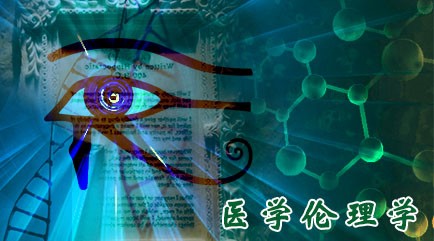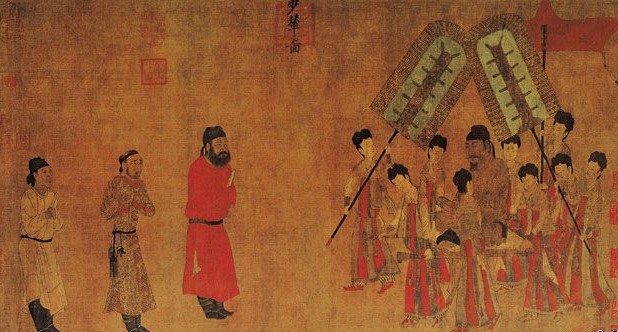
当前课程知识点:Botany > Chapter 7 Reproductive Organ——Flower > 7.6 Double fertilization of angiosperms > 7.6 Double fertilization of angiosperms
Fertilization selectivity
We know that there are stamens and pistils in flowers. The anther of the stamen is the place where pollen (containing sperm cells) is produced, and the ovule of the pistil is the place where embryo sacs (egg cells) are produced. An anther usually has 4 pollen sacs, each with hundreds or more pollen grains, and only one embryo sac is formed in an ovule, and there is only one egg cell in one sac. Therefore, the number of female and male cells in a flower is very different, which leads to the selection of male gametes in every process of pollination and fertilization. Please consider the biological significance of this choice.
-0.1 Basic characteristics of plants
--0.1 Basic characteristics of plants
--0.1 Basic characteristics of plants
--0.1 Basic characteristics of plants
--0.1 Basic characteristics of plants
-0.2 The status of plants in the biological world
--0.2 The status of plants in the biological world
--0.2 The status of plants in the biological world
--0.2 The status of plants in the biological world
--0.2 The status of plants in the biological world
-0.3 Plant diversity and protection
--0.3 Plant diversity and protection
--0.3 Plant diversity and protection
--0.3 Plant diversity and protection
-0.4 The role of plants in nature and human life
--0.4 The role of plants in nature and human life
--0.4 The role of plants in nature and human life
--0.4 The role of plants in nature and human life
--0.4 The role of plants in nature and human life
-0.5 Brief history and trend of botany development
--0.5 Brief history and trend of botany development
--0.5 Brief history and trend of botany development
--0.5 Brief history and trend of botany development
-1.1 Overview of plant cells
-1.2 Surface structure of plant cells
--1.2 Surface structure of plant cells
--1.2 Surface structure of plant cells
--1.2 Surface structure of plant cells
-1.3 Cytoplasm and nucleus of plant cells
--1.3 Cytoplasm and nucleus of plant cells
--1.3 Cytoplasm and nucleus of plant cells
--1.3 Cytoplasm and nucleus of plant cells
-1.4 Ergastic substance in plant cells
--1.4 Ergastic substance in plant cells
--1.4 Ergastic substance in plant cells
--1.4 Ergastic substance in plant cells
-1.5 Cell proliferation, growth, differentiation and senescence
--1.5 Cell proliferation, growth, differentiation and senescence
--1.5 Cell proliferation, growth, differentiation and senescence
--1.5 Cell proliferation, growth, differentiation and senescence
-Chapter 1 Plant Cell
-2.1 Tissues overview and meristem
--2.1 Tissues overview and meristem
--2.1 Tissues overview and meristem
--2.1 Tissues overview and meristem
--2.1 Tissues overview and meristem
-2.2 Protective tissue
--2.2 Protective tissue
-2.3 Ground tissue, mechanical tissue and secretory structure
--2.3 Ground tissue, mechanical tissue and secretory structure
--2.3 Ground tissue, mechanical tissue and secretory structure
--2.3 Ground tissue, mechanical tissue and secretory structure
-2.4 Conducting tissues
--2.4 Conducting tissues
-2.5 Complex tissue and tissue system
--2.5 Complex tissue and tissue system
--2.5 Complex tissue and tissue system
--2.5 Complex tissue and tissue system
-3.1 Structure and type of seeds
--3.1 Structure and type of seeds
--3.1 Structure and type of seeds
--3.1 Structure and type of seeds
-3.2 Seed germination and seedling development
--3.2 Seed germination and seedling development
--3.2 Seed germination and seedling development
--3.2 Seed germination and seedling development
-Chapter 3 Seed and Seedling
-4.1 Morphological and physiological functions of root
--4.1 Morphological and physiological functions of root
--4.1 Morphological and physiological functions of root
--4.1 Morphological and physiological functions of root
-4.2 Root tip and its zone
--4.2 Root tip and its zone
-4.3 Primary growth and primary structure of roots
--4.3 Primary growth and primary structure of roots
--4.3 Primary growth and primary structure of roots
--4.3 Primary growth and primary structure of roots
--4.3 Primary growth and primary structure of roots
-4.4 Secondary growth and secondary structure of roots
--4.4 Secondary growth and secondary structure of roots
--4.4 Secondary growth and secondary structure of roots
--4.4 Secondary growth and secondary structure of roots
--4.4 Secondary growth and secondary structure of roots
-4.5 Root modifications
--4.5 Root modifications
-5.1 Basic characteristics and physiological functions of stem
--5.1 Basic characteristics and physiological functions of stem
--5.1 Basic characteristics and physiological functions of stem
--5.1 Basic characteristics and physiological functions of stem
-5.2 Stem tip structure and stem primary growth
--5.2 Stem tip structure and stem primary growth
--5.2 Stem tip structure and stem primary growth
--5.2 Stem tip structure and stem primary growth
-5.3 Primary structure of stem
--5.3 Primary structure of stem
--5.3 Primary structure of stem
--5.3 Primary structure of stem
-5.4 Secondary growth of stem
--5.4 Secondary growth of stem
--5.4 Secondary growth of stem
--5.4 Secondary growth of stem
-5.5 Structure of perennial stem
--5.5 Structure of perennial stem
--5.5 Structure of perennial stem
--5.5 Structure of perennial stem
-5.6 Stem modification
-Chapter 5 Vegetative organ——stem
-6.1 Physiological function and basic composition of leaves
--6.1 Physiological function and basic composition of leaves
--6.1 Physiological function and basic composition of leaves
--6.1 Physiological function and basic composition of leaves
-6.2 Anatomical structure of leaves
--6.2 Anatomical structure of leaves
--6.2 Anatomical structure of leaves
--6.2 Anatomical structure of leaves
-6.3 Ecological types of leaves and senescence and abscission of leaves
--6.3 Ecological types of leaves and senescence and abscission of leaves
--6.3 Ecological types of leaves and senescence and abscission of leaves
--6.3 Ecological types of leaves and senescence and abscission of leaves
-6.4 Metamorphosis of leaves
-Chapter 6 Vegetative organ——leaf
-7.1 Concept and types of plant propagation
--7.1 Concept and types of plant propagation
--7.1 Concept and types of plant propagation
--7.1 Concept and types of plant propagation
--7.1 Concept and types of plant propagation
-7.2 Flower and flower bud differentiation
--7.2 Flower and flower bud differentiation
--7.2 Flower and flower bud differentiation
--7.2 Flower and flower bud differentiation
--7.2 Flower and flower bud differentiation
-7.3.1 Anther development and structure
--7.3.1 Anther development and structure
--7.3.1 Anther development and structure
--7.3.1 Anther development and structure
-7.3.2 Development of pollen grains
--7.3.2 Development of pollen grains
--7.3.2 Development of pollen grains
--7.3.2 Development of pollen grains
-7.3.3 Morphology and structure of pollen grains
--7.3.3 Morphology and structure of pollen grains
--7.3.3 Morphology and structure of pollen grains
--7.3.3 Morphology and structure of pollen grains
--7.3.3 Morphology and structure of pollen grains
-7.4.1 Morphology and structure of pistil
--7.4.1 Morphology and structure of pistil
--7.4.1 Morphology and structure of pistil
--7.4.1 Morphology and structure of pistil
-7.4.2 Development of ovule and embryo sac
--7.4.2 Development of ovule and embryo sac
--7.4.2 Development of ovule and embryo sac
--7.4.2 Development of ovule and embryo sac
-7.5 Flowering and pollination
--7.5 Flowering and pollination
--7.5 Flowering and pollination
--7.5 Flowering and pollination
--7.5 Flowering and pollination
-7.6 Double fertilization of angiosperms
--7.6 Double fertilization of angiosperms
--7.6 Double fertilization of angiosperms
--7.6 Double fertilization of angiosperms
--7.6 Double fertilization of angiosperms
-8.1 Seed development
-8.2 Fruit development
-8.3 Life cycle of Angiosperm
--8.3 Life cycle of Angiosperm
--8.3 Life cycle of Angiosperm
--8.3 Life cycle of Angiosperm
-Chapter 8 Seed and Fruit
-9.1 Algae
-9.2 Bryophyte
-9.3 Pteridophyte
-9.4 Spermatophyta
-9.5 Overview of plant evolution
--9.5 Overview of plant evolution
--9.5 Overview of plant evolution
--9.5 Overview of plant evolution
-Chapter 9 Major groups and evolution of the plant kingdom
-10.1 Basics of plant classification
--10.1 Basics of plant classification
--10.1 Basics of plant classification
-10.2.1 Morphological terms of angiosperm classification ——Leaves
--10.2.1 Morphological terms of angiosperm classification ——Leaves
--10.2.1 Morphological terms of angiosperm classification ——Leaves
-10.2.2 Morphological terms of angiosperm classification——Inflorescence
--10.2.2 Morphological terms of angiosperm classification——Inflorescence
--10.2.2 Morphological terms of angiosperm classification——Inflorescence
-10.2.3 Morphological terms of angiosperm classification——Flowers Part 1
--10.2.3 Morphological terms of angiosperm classification——Flowers Part 1
--10.2.3 Morphological terms of angiosperm classification——Flowers Part 1
-10.2.4 Morphological terms of angiosperm classification——Flowers Part 2
--10.2.4 Morphological terms of angiosperm classification——Flowers Part 2
--10.2.4 Morphological terms of angiosperm classification——Flowers Part 2
-10.2.5 Morphological terms of angiosperm classification——Fruits Part 1
--10.2.5 Morphological terms of angiosperm classification——Fruits Part 1
--10.2.5 Morphological terms of angiosperm classification——Fruits Part 1
-10.2.6 Morphological terms of angiosperm classification——Fruits Part 2
--10.2.6 Morphological terms of angiosperm classification——Fruits Part 2
--10.2.6 Morphological terms of angiosperm classification——Fruits Part 2
-Chapter 10 Basic knowledge of plant classification
-11.1 Magnoliaceae
--11.1 Magnoliaceae
-11.2 Brassicaceae
--11.2 Brassicaceae
-11.3 Rosaceae
--11.3 Rosaceae
-11.4 Leguminosae
--11.4 Leguminosae
-11.5 Rutaceae and Solanaceae
--11.5 Rutaceae and Solanaceae
--11.5 Rutaceae and Solanaceae
--11.5 Rutaceae and Solanaceae
-11.6 Compositae
--11.6 Compositae
-11.7 Grameae and Cyperaceae
--11.7 Grameae and Cyperaceae
-11.8 Liliaceae
--11.8 Liliaceae



